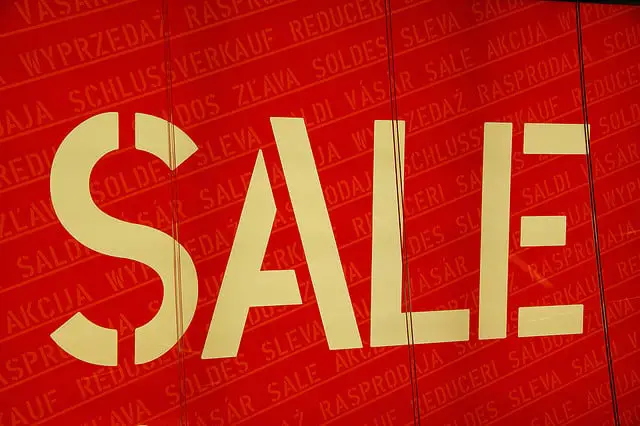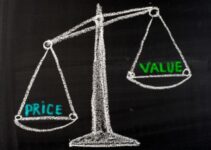Pricing Cues
Pricing cues should be planned, implemented and measured, to track their success. Long term organizational perspective should be uppermost while deciding on these cues.
Customers do not have an accurate sense of prices of the items they are buying. And surprisingly most customers do not make any big effort to know the true price of the, items that they have bought or are planning to buy. And most customers hardly lose sleep over their ignorance.
Customers are content with the bargains they get because they trust their retailers to tell them if they are getting value for their money. Retailers send manifest and subtle signals to customers, suggesting whether a given price is relatively high or low.
Some of the Commonly used Effective Pricing Cues
1. The sale sign announces a discount for the customer. There is a significant rise in demand when an item is on “sale” though the retailer may make no commitment to a particular level of discount. But there are incidents when a retailer has claimed that a price has been discounted when actually that is not the case. Some retailers exaggerate their discounts by inflating their regular prices. And some items are never sold at their regular prices.
When customers learn about such practices of a store they feel cheated and shun such stores. But most customers trust sale signs because they are genuine most of the time. Customers are also able to quickly adjust their attitude towards sale signs, if they find a store overusing it. The sale sign becomes less effective in increasing demand if used very frequently.
The credibility of the discount claims are reduced. They depress total sales when more items are on sale in comparison to when only a few items are on sale. Total category sales are at a peak when some, but not all, items in the category have sale signs. Beyond a certain point, use of additional sale signs may result in a fall in total category sales. Therefore sale signs should be used judiciously.
2. ‘9’ at the end of a price indicates a bargain. Demands have been reported to go up when prices have been increased to finish at figure ending with 9, for example when price has been increased from$ 75 to$ 79. One possible explanation for this type of behavior of customers is that 9 at the end of a price acts the same way as a sale sign does i.e. proclaim a discount.
This is corroborated by the fact that prices ending in 9 are less effective when an item already has a sale sign. The sale sign informs the customers that the item is on sale, so little information is added by the price ending. When a store prices all its items ending in 9 all the time, it is not likely to increase demand.
3. Customers do not remember prices of most items so they cannot tell whether they are being charged a fair amount. But they remember the prices of a few items that they buy very frequently. For example, most customers will remember the price of a can of Coke. If they find that the price of a can of Coke in a particular store is less than what he has been paying, he will assume that other items would be similarly priced at lower levels. And conversely if he finds the can of Coke to be priced at higher levels, he will believe that the store normally charges higher prices on all its items.
Retailers take advantage of this phenomenon. Supermarkets take a loss on Pepsi or Coke and many stores selling sports goods offer tennis balls at a price below cost. Retailers should choose popular products whose prices customers are able to remember accurately and price them lower than cost. Complementary products also serve as good pricing signposts. A retailer can sell DVDs at prices below their cost, to signal low prices for DVD players. But customers are less likely to believe that the store price levels are low if they can attribute the low price to special circumstances.
For example, if everyone understands that chip-intensive products are cheaper because the price of computer memory chips have come down, they will not believe that the store normally charges low prices. The retailer should attempt to convey on image of low prices by offering popular and complementary products at lower prices, so that other items are sold because of perception of lower prices.
If a retailer offers a higher discount on an item by quoting a higher regular price, it may lure in customers for the sale but the customer will walk out with a feeling that the store price levels are higher. Customers will not go to such store for their normal purchases at regular prices.
4. Some retailers promise to meet or beat any competitor’s price. Some retailers voluntarily refund the extra money paid by a customer if a competitor announces a lower price for the item that the customer bought. When retailers give price guarantees, customers are sure that the store prices are below those of competitors. But it is not entirely clear whether price matching offers by retailers translate into lower price for customers.
Price guarantees bring down the level of price dispersion in the market, which ensures that all retailers have almost similar prices on items that are common across stores. They may lead to an overall rise in prices. It is also argued that price-matching policies are not really targeted at the consumers. They are a warning to competitors that if they cut their prices, they will be matched.
This may reduce competition. In business-to-business relationships, suppliers promise their customers that they will not sell their product to any other customer at a lower price. Their customers may believe that they are getting the best price but essentially the supplier is signaling to its competitors that it will not reduce prices since it will have to rebate the discount to all its previous customers. This may also reduce competition.
It is important that the retailer has measurement systems in place to monitor the effect of a pricing cue, which will help in taking decision about its continuance, or extension to other products, or termination. It is also important to consider the long-time implications of the cues. It sometimes happens that maximization of short-term profits leads to sub-optimal profits in the long run.
In response to sale signs, it has been noticed that customers who saw deep discounts on their first purchase returned more often and purchased more items when they came back, but established customers stocked up, returning less often and purchasing fewer items. If a retailer ignores such long-term implications, he will set very low prices for established customers because they bought more in response to the lower price but came back less and bought less overall.
The retailer would instead set high prices for first-time customers because they bought less in the first purchase but came back to purchase more. The number of times a sales can be held and number of items which can be on sale at one time have to be very judiciously decided, as excessive use of sale signs gives diminishing returns.
Finally, it is important to remember that pricing cues are double-edge swords. If price cues gain credibility with customers, they will come back to shop repeatedly. But if customers learn that the pricing dues are a mere ploy to lure them and there is no substantive gain to them, they may never return to the store again.
References:
http://hbr.org/2003/09/mind-your-pricing-cues/ar/1
http://www.ncbi.nlm.nih.gov/pubmed/12964397


